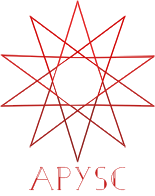PathBezier3DContinual class¶
This page explains the PathBezier3DContinual class.
What class is this?¶
The PathBezier3DContinual class is the class to set a continual 3D bezier curve on a path.
This setting draws a smooth curve by using a line-symmetric control point.
Mainly, the Path class constructor or draw_path interfaces use this setting.
Basic usage¶
The PathBezier3DContinual class constructor requires the control_x, control_y, dest_x, and dest_y arguments.
The control_x and control_y are the second control point of a bezier curve.
A line-symmetric control point of a bezier curve’s second control point becomes the first control point of the PathBezier3DContinual setting.
So there are no arguments to set the first control point in the PathBezier3DContinual constructor.
The dest_x and dest_y are the destination point of a bezier curve.
The PathBezier3DContinual class has a restriction, and you can use this class only after the PathBezier3D or PathBezier3DContinual.
import apysc as ap
ap.Stage(
background_color=ap.Color("#333"),
stage_width=400,
stage_height=420,
stage_elem_id="stage",
)
path: ap.Path = ap.Path(
path_data_list=[
ap.PathMoveTo(x=50, y=200),
ap.PathBezier3D(
control_x1=50,
control_y1=25,
control_x2=200,
control_y2=25,
dest_x=200,
dest_y=200,
),
ap.PathBezier3DContinual(
control_x=350,
control_y=375,
dest_x=350,
dest_y=200,
),
],
line_color=ap.Color("#0af"),
line_thickness=5,
)
ap.save_overall_html(dest_dir_path="path_bezier_3d_continual_basic_usage_1/")
In the following example, the cyan circle shows the control point (control_x and control_y), and the magenta circle shows the destination point (dest_x and dest_y):
import apysc as ap
ap.Stage(
background_color=ap.Color("#333"),
stage_width=400,
stage_height=420,
stage_elem_id="stage",
)
CONTROL_X: float = 350
CONTROL_Y: float = 375
DEST_X: float = 350
DEST_Y: float = 200
path: ap.Path = ap.Path(
path_data_list=[
ap.PathMoveTo(x=50, y=200),
ap.PathBezier3D(
control_x1=50,
control_y1=25,
control_x2=200,
control_y2=25,
dest_x=200,
dest_y=200,
),
ap.PathBezier3DContinual(
control_x=CONTROL_X,
control_y=CONTROL_Y,
dest_x=DEST_X,
dest_y=DEST_Y,
),
],
line_color=ap.Color("#fff"),
line_thickness=5,
)
RADIUS: int = 10
cyan_circle: ap.Circle = ap.Circle(
x=CONTROL_X,
y=CONTROL_Y,
radius=RADIUS,
fill_color=ap.Color("#0af"),
)
magenta_circle: ap.Circle = ap.Circle(
x=DEST_X,
y=DEST_Y,
radius=RADIUS,
fill_color=ap.Color("#f0a"),
)
ap.save_overall_html(dest_dir_path="path_bezier_3d_continual_basic_usage_2/")
Relative position setting¶
The constructor’s relative optional argument changes its behavior.
For example, if you set True to its argument, coordinates become relative.
The default setting is False, and it becomes absolute.
A criteria point is a starting point, not a control point.
import apysc as ap
ap.Stage(
background_color=ap.Color("#333"),
stage_width=400,
stage_height=420,
stage_elem_id="stage",
)
path: ap.Path = ap.Path(
path_data_list=[
ap.PathMoveTo(x=50, y=200),
ap.PathBezier3D(
control_x1=50,
control_y1=25,
control_x2=200,
control_y2=25,
dest_x=200,
dest_y=200,
),
ap.PathBezier3DContinual(
control_x=150,
control_y=175,
dest_x=150,
dest_y=0,
relative=True,
),
],
line_color=ap.Color("#0af"),
line_thickness=5,
)
ap.save_overall_html(dest_dir_path="path_bezier_3d_continual_relative/")
PathBezier3DContinual class constructor API¶
Note: the document build script generates and updates this API document section automatically. Maybe this section is duplicated compared with previous sections.
[Interface signature] __init__(self, control_x: Union[float, apysc._type.number.Number], control_y: Union[float, apysc._type.number.Number], dest_x: Union[float, apysc._type.number.Number], dest_y: Union[float, apysc._type.number.Number], *, relative: Union[bool, apysc._type.boolean.Boolean] = False, variable_name_suffix: str = '') -> None
[Interface summary]
Path data class for SVG’s continual 3D bezier curve (S).
[Parameters]
control_x: float or NumberX-coordinate of the bezier’s control point.
control_y: float or NumberY-coordinate of the bezier’s control point.
dest_x: float or NumberX-coordinate of the destination point.
dest_y: float or NumberY-coordinate of the destination point.
relative: bool or Boolean, default FalseA boolean value indicates whether the path coordinates are relative or not (absolute).
variable_name_suffix: str, default “”A JavaScript variable name suffix string. This setting is sometimes useful for JavaScript debugging.
[Examples]
>>> import apysc as ap
>>> stage: ap.Stage = ap.Stage()
>>> sprite: ap.Sprite = ap.Sprite()
>>> sprite.graphics.line_style(color=ap.Color("#fff"), thickness=3)
>>> path: ap.Path = sprite.graphics.draw_path(
... path_data_list=[
... ap.PathMoveTo(x=0, y=50),
... ap.PathBezier3D(
... control_x1=0,
... control_y1=0,
... control_x2=50,
... control_y2=0,
... dest_x=50,
... dest_y=50,
... ),
... ap.PathBezier3DContinual(
... control_x=100, control_y=100, dest_x=100, dest_y=50
... ),
... ]
... )
[References]
